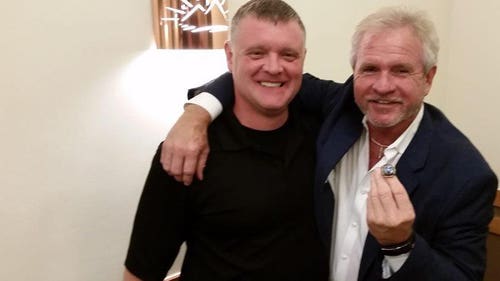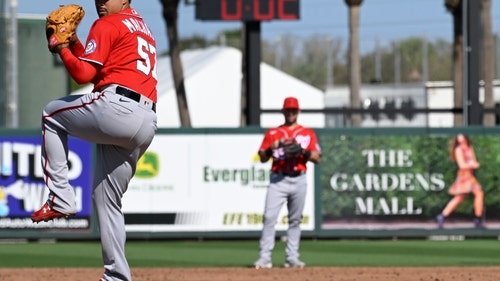
Rangers' Kinsler tops all other 2Bs
A decade ago, the question was enough to spark a barroom battle royal: Who’s the best shortstop in baseball?
Depending on the month and year, there were as many as four acceptable answers: Derek Jeter, Alex Rodriguez, Miguel Tejada and Nomar Garciaparra. (Since I’m certain the matter is unsettled in certain precincts, please note I listed those names in no particular order.)
“I was in junior college when all that was going on,” Ian Kinsler, the Texas Rangers’ All-Star second baseman, recalled Wednesday morning. “It was those four guys. It was pretty cool to watch them change the position.”
While baseball fans argued about Jeter and A-Rod, Kinsler was in the midst of a peripatetic route to the majors. He was enrolled at three schools — Central Arizona College, Arizona State and Missouri — within a nine-month span in 2001 and 2002. The Rangers selected him in the 17th round of the 2003 draft. Nothing about Kinsler’s amateur career suggested that he would become a franchise player. But he has, with a contract — five years, $75 million — to prove it.
Now Kinsler, 29, is part of his generation’s Great Positional Debate. Although more geographically disparate than Willie, Mickey and the Duke, it will become a favorite of the tobacco-spitting and wine-sipping sets alike.
Who’s the best second baseman in baseball — Robinson Cano, Dustin Pedroia or Ian Kinsler?
Right now, the correct answer is Kinsler.
As with the shortstops in the early 2000s, the title belt could change hands during the season. But Kinsler has it now. He’s been a little more productive than the steady Pedroia, and Cano is off to a slow start. Kinsler owns the best OPS among major league second basemen — a scalding .945 — and the raw numbers explain only a portion of his value.
Kinsler is an ideal leadoff hitter. He leads the majors in runs scored. A 30/30 player last season, he poses multiple threats beginning with the game’s first pitch. He’s just aggressive enough, eager to crush a mistake pitch but content to take his base. Proof of that: He has the best walk-to-strikeout rate in the major leagues (1.67).
Kinsler may be the best fusion of power, patience, contact and speed in the game today. Of the top 10 players in baseball according to the FanGraphs.com WAR rankings, he’s the only one who has struck out in less than 10 percent of his plate appearances.
Kinsler has one of the calmest batting stances in baseball — knees bent slightly, steady hands ready to pounce, high socks hiked to the knee. He takes almost no stride: right foot rocks up, right foot rocks back, bat whips through the zone.
The swing is as simple and instantaneous as light switch. And it’s a blur to everyone — except Kinsler, whose strikeout rate has fallen considerably over the past two years.
“The more experience you get, the game slows down for you,” he said. “It’s not something you think about. It’s something that develops. It’s not like I go into spring training, saying I need to get better at strike-zone discipline. It’s a matter of playing games. I was always an aggressive hitter coming up. I’ve been able to pull back the reins a little bit and be more patient.”
Kinsler’s painstaking plate discipline was on display Tuesday, when he came to bat as the tying run with two out in the ninth inning. Toronto closer Francisco Cordero moved ahead of him with two quick strikes, before Kinsler flicked away an 0-2 slider to keep the at-bat alive.
The fourth pitch — 93 miles per hour, low, on the outside corner — could not have been closer to the edge of the strike zone. Kinsler took it, anyway. Ball one.
Kinsler said the call could have gone either way. But he knew what to do with the reprieve. Two pitches later, he smacked a line-drive single into right-center. That’s an uncommon result for Kinsler, a pull hitter. But it illustrated just how well he was seeing the ball. Kinsler’s refusal to make the last out led to the tying run, although Toronto prevailed 8-7.
“When you’ve got a guy who sees a bunch of pitches, he knows the strike zone pretty darn good,” admired Blue Jays catcher Jeff Mathis. “If you watch him, he’s always ready for the heater. He’s never late. He gets his foot down early. It’s like he’s just sitting there waiting on the ball. He’s always ready to hit. He’s very consistent. When you don’t swing at bad pitches, you get in good counts, and you’re going to be successful.”
Not to be overlooked: Kinsler has become much smoother in the field, after leading the league in errors at second base during each of his first three seasons. Toronto manager John Farrell called Kinsler an “underrated” defender with excellent range. “A complete player,” Farrell said. “There’s a reason he’s an All-Star.”
About the only knock on Kinsler is that he’s had trouble staying healthy. He spent time on the disabled list in each of his first five big league seasons. But he played in a career-high 155 games last year, and general manager Jon Daniels looked at his broad array of attributes — including clubhouse leadership — in recommending Kinsler’s contract extension.
Kinsler has become a fan favorite in Texas, with the high socks and unruly hair making him particularly popular among aspiring Little Leaguers. Just about every week, parents approach Kinsler to say that their son wears his baseball pants up to the knee as a tribute to their favorite player.
“Around the city and at the park, we see a lot of No. 5 jerseys,” Daniels said, “and it’s all for the right reasons.”
The kids know talent. They’re wearing the number of the best second baseman in the game.










